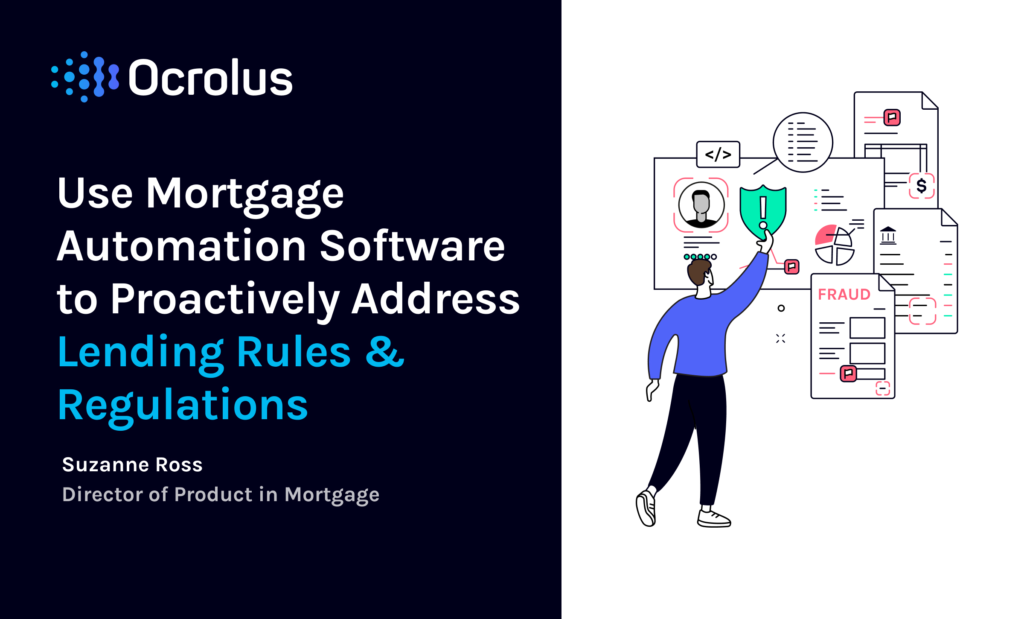Use Mortgage Automation Software to Proactively Address Lending Rules & Regulations

Since the passing of the Dodd-Frank Act in 2010, the cost of operating expenses to banks has increased by an average of $50 billion per year, according to the Baker Institute. Aside from the associated high cost, lenders face other significant challenges with regulatory adherence.
Chief among these are the inherent limitations of legacy technology, which can generate compliance bottlenecks and heighten non-compliance risks. Another main challenge is the need to hire specialist professionals amid the “Great Resignation,” which has seen record numbers of workers decide to leave their jobs since the onset of the pandemic.
Mortgage lenders are now turning to advanced automation and machine learning technologies to address these high costs and diminish risks. Furthermore, the mortgage lending industry is also looking to reduce its reliance on limited legacy technology. However, while they are aware of the need to integrate more artificial intelligence across their operational and compliance infrastructure, concerns over implementation complexity often hold businesses back.
Enabling Unprecedented Lender Compliance Performance With Mortgage Automation
By integrating the right mortgage automation software, mortgage lenders can completely overhaul central areas of the mortgage process, including underwriting, anti-fraud measures, and speed of application process.
1. Faster, Thorough Applicant Identity Verification and Vetting
Mortgage automation can equip lenders to gather, analyze, and interpret enormous amounts of data to support many areas of the process that are time-consuming, manual, and prone to human error. Such steps include processing applicant identification, document tampering detection, background checks on applicant income, credit scoring analysis, and applicant communication. Strong performance in these critical areas helps support streamlined, thorough regulatory compliance.
2. Supporting the Underwriting Function
Loan underwriters are under greater pressure compared to before the global pandemic. Applications have moved to digital channels and customers expect faster decisions. Moreover, the underwriting industry is in the middle of a talent shortage, with many in the role reaching retirement age, and a lack of suitable candidates to replace them. Traditional underwriting technology and processes are largely unable to meet the modern and changing demands of the market.
To help, lenders can integrate automation to take over many of the more manual and rote parts of the loan application process. This will assist underwriting professionals in adjusting to the sudden change and increasing demands on their function.
3. Efficient Data Management and Regulatory Reporting
The key to this new era in mortgage lending is data. Not only can optimal data management support better lending decision-making and provide opportunities to upsell and cross-sell other financial products to customers, but it positions lenders to improve how they comply with regulatory obligations. Efficient and secure gathering, storage, analysis, and interpretation of rich data enables lenders to generate highly pertinent reports for regulators. Moreover, strong data processes help lenders detect fraud with greater precision and support fraud investigations for faster, more accurate outcomes.
In turn, this helps create and entrench positive regulator relations, reduces the cost of regulatory compliance through a massive reduction in manual input, and decreases the likelihood of regulatory fines and possible repetitional damage associated with non-compliance.
4. Stamping out Fraud
Lenders can integrate highly efficient automatic regulation checks into multiple points across their workflows. Furthermore, advanced artificial intelligence and machine learning capabilities can go even further by executing purpose-designed anti-fraud measures.
The key to such enhanced anti-fraud outcomes is reliable mortgage lender data. With digital processes replacing the traditional mortgage loan experience, lenders without a modern data management infrastructure are likely vulnerable to increased risk of fraud via digital means. The ability to comprehensively gather, analyze and store data is crucial in the fight against mortgage fraud.
The right mortgage automation software positions lenders to create a data environment workflow that addresses modern market needs. It also facilitates the creation of monitoring rules that actively search out suspicious behavior or possible incidents of mortgage lending fraud or noncompliance wherever they may occur.
Achieving Long-term, Optimal Compliance Performance With Mortgage Automation
The mortgage market is going through a period of technology-led change, and the pace of innovation will only accelerate. The time is now to integrate mortgage automation software that enables mortgage lenders to address modern regulatory deficiencies and future-proof themselves for shifts in the market.
Discover how Ocrolus simplifies mortgage lending decision-making and helps strengthen regulatory compliance by identifying suspicious activity and potential fraud using mortgage automation with a free trial today.





